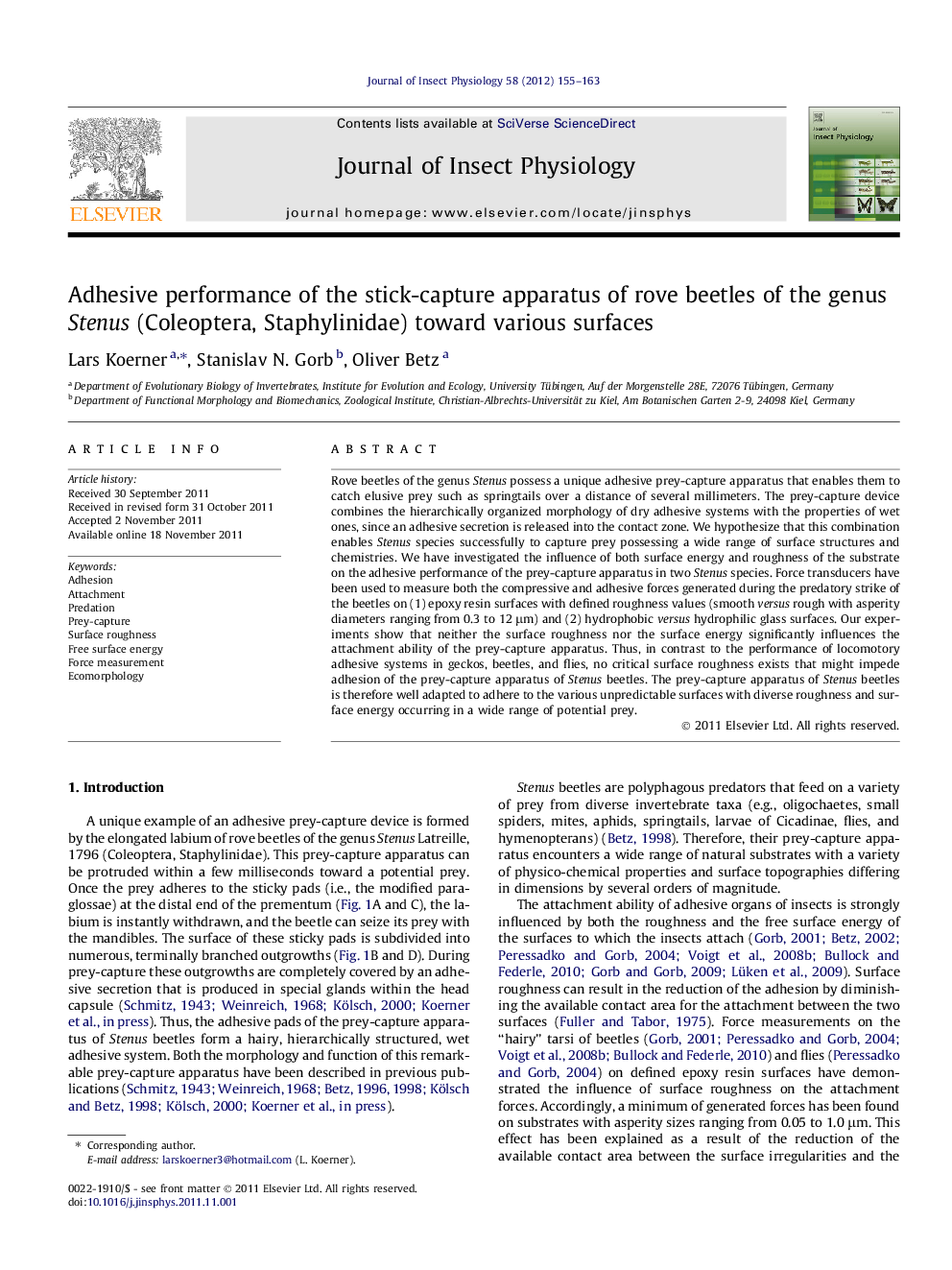| کد مقاله | کد نشریه | سال انتشار | مقاله انگلیسی | نسخه تمام متن |
|---|---|---|---|---|
| 5922000 | 1165343 | 2012 | 9 صفحه PDF | دانلود رایگان |

Rove beetles of the genus Stenus possess a unique adhesive prey-capture apparatus that enables them to catch elusive prey such as springtails over a distance of several millimeters. The prey-capture device combines the hierarchically organized morphology of dry adhesive systems with the properties of wet ones, since an adhesive secretion is released into the contact zone. We hypothesize that this combination enables Stenus species successfully to capture prey possessing a wide range of surface structures and chemistries. We have investigated the influence of both surface energy and roughness of the substrate on the adhesive performance of the prey-capture apparatus in two Stenus species. Force transducers have been used to measure both the compressive and adhesive forces generated during the predatory strike of the beetles on (1) epoxy resin surfaces with defined roughness values (smooth versus rough with asperity diameters ranging from 0.3 to 12 μm) and (2) hydrophobic versus hydrophilic glass surfaces. Our experiments show that neither the surface roughness nor the surface energy significantly influences the attachment ability of the prey-capture apparatus. Thus, in contrast to the performance of locomotory adhesive systems in geckos, beetles, and flies, no critical surface roughness exists that might impede adhesion of the prey-capture apparatus of Stenus beetles. The prey-capture apparatus of Stenus beetles is therefore well adapted to adhere to the various unpredictable surfaces with diverse roughness and surface energy occurring in a wide range of potential prey.
Highlights⺠Stenus rove beetles have a remarkable labial adhesive prey-capture apparatus. ⺠We examined the influence of surface properties on its adhesive performance. ⺠Neither surface roughness nor surface energy affected the attachment performance. ⺠No critical surface roughness as described for insect tarsi was found. ⺠Thus, this prey-capture device is well adapted to adhere to various prey surfaces.
Journal: Journal of Insect Physiology - Volume 58, Issue 1, January 2012, Pages 155-163